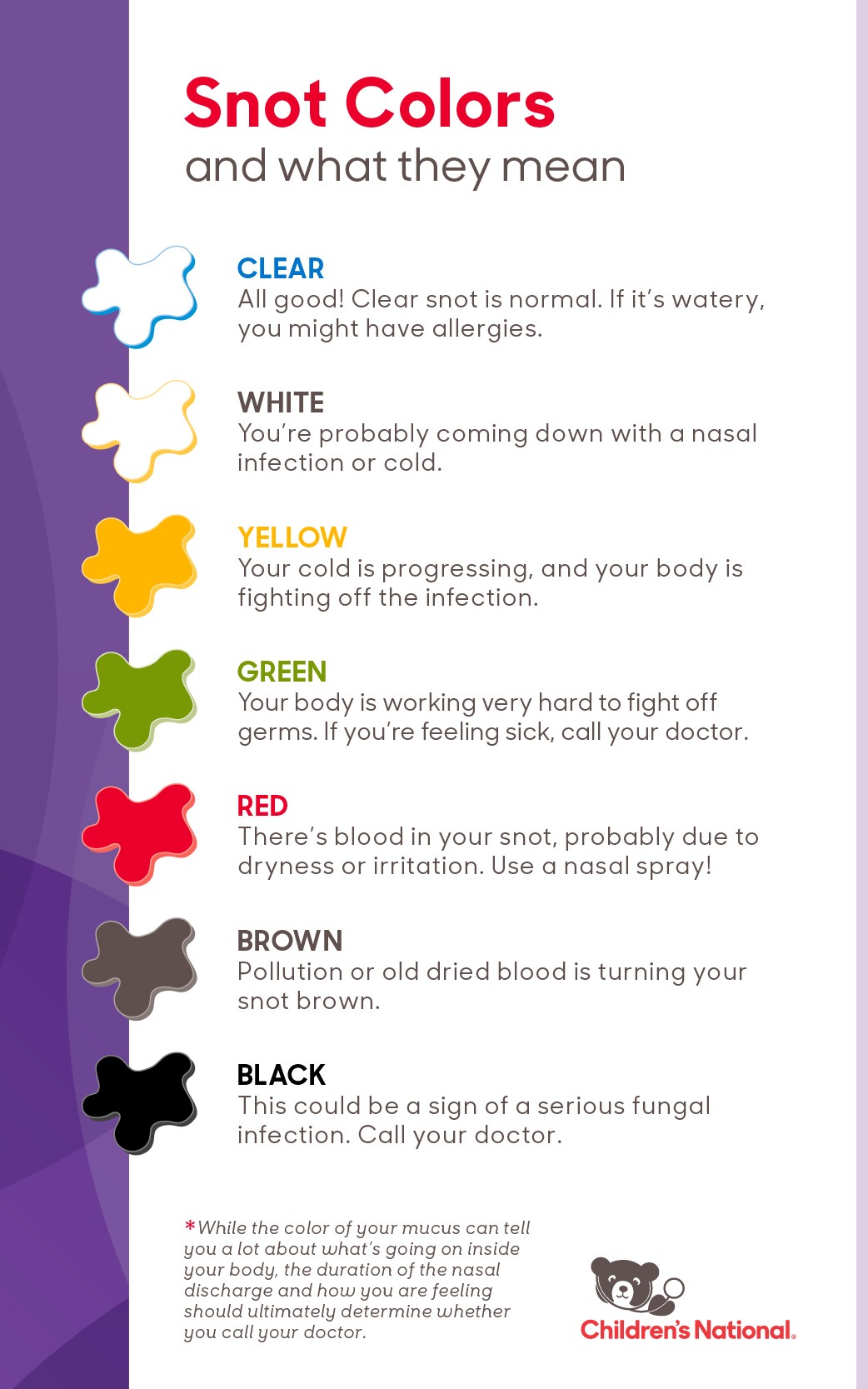It’s that time of year again when sniffles and sneezes seem to be everywhere. As you reach for a tissue, you might notice the color of your nasal mucus, or snot. While it might be something you’d rather not think about, the color of your snot can actually be a valuable indicator of your health. You might be wondering, particularly if you’ve noticed a change, “Why Is My Snot Orange?”. Let’s dive into the world of snot colors and understand what orange snot, and other hues, can tell you about your body.
The Role of Mucus: Your Body’s Natural Defense
Before we delve into specific colors, it’s important to appreciate the vital role mucus plays in keeping us healthy. This sticky substance acts as the body’s frontline defense against infections. It’s designed to trap invaders like bacteria, viruses, dust, and pollutants before they can cause trouble in your respiratory system. When your body detects an increased presence of germs or irritants, it ramps up mucus production to effectively trap and expel these unwanted substances. This dynamic response is why snot can change color – it’s a visual cue reflecting what’s happening inside your body. So, taking a peek at the color in your tissue is more insightful than you might think.
Decoding the Snot Color Spectrum: What Each Hue Means
Let’s explore the rainbow of snot colors and what each might indicate about your health.
Clear Snot: Normal and Healthy
Clear snot is generally a sign of good health. It’s considered “normal” and indicates your nasal passages are functioning as they should. However, if you experience a significant increase in clear nasal discharge, especially accompanied by sneezing and a runny nose, it could be a sign of allergies or hay fever. In these cases, your body is producing excess mucus in response to allergens.
White Snot: Congestion and Potential Cold
If your snot appears white and cloudy, it often indicates congestion or stuffiness. White snot occurs when mucus loses moisture, becoming thicker and less translucent. This is frequently associated with the onset of a common cold. Alongside white snot, you might experience other cold symptoms such as a sore throat, nasal congestion, coughing, or a mild fever.
Yellow Snot: Fighting Off Infection
Yellow snot is a common sign that your body is actively battling an infection, usually viral. The yellow color comes from dead white blood cells, which are dispatched to fight off viruses or bacteria. These cells, after doing their job, are expelled in your mucus, giving it a yellow or slightly brownish tint. While yellow snot is a typical part of the recovery process and usually not a cause for alarm, it’s wise to monitor its duration. If yellow snot persists for more than 10 days without improvement, consulting a doctor is recommended.
Green Snot: A Stronger Immune Response
Green snot signals a more robust immune response to an infection. When your snot is green, it signifies a larger number of white blood cells are involved in fighting off infection. The green color is due to a buildup of dead white blood cells, along with other waste products from the battle against germs. Green snot can also be an indicator of a sinus infection (sinusitis), especially when accompanied by facial pain, sinus pressure, and headaches. If you have green snot and have been feeling unwell for over 10 days, or if you experience fever or significant headache along with green snot, it’s advisable to seek medical advice.
Red or Pink Snot: Presence of Blood
Red or pink snot typically indicates the presence of blood in your nasal mucus. This often results from a dry or irritated nasal passage, or minor nasal trauma. Causes can range from dry air, especially during cold weather, to excessive nose-blowing, or minor injuries to the nose. Using a nasal saline spray, applying a thin layer of petroleum jelly to the nostrils, or using a humidifier can help alleviate dryness. However, if red snot is accompanied by frequent nosebleeds or breathing difficulties, it’s important to consult a doctor.
Brown or Orange Snot: Often Dried Blood or Environmental Factors
Now, let’s focus on orange snot. Brown or orange snot is frequently linked to the presence of old, dried blood leaving the nasal passages. It can appear after a bout of pink or red snot as the blood oxidizes and changes color. Another common reason for brown or orange snot is environmental. Inhaling pollutants, dirt, dust, or even tobacco smoke can discolor your mucus, resulting in a brown or orange hue. If you’ve been exposed to dusty environments or air pollution, this is a likely explanation for orange or brown snot. Generally, orange or brown snot isn’t a cause for immediate concern unless it persists or is accompanied by other worrying symptoms.
 snot color infographic
snot color infographic
Black Snot: Potential Fungal Infection or Severe Irritation
Black snot is less common and can be a sign of a fungal infection, particularly in individuals with weakened immune systems. Fungal infections require medical attention, so if you observe black snot, it’s important to contact your doctor promptly. Black snot can also occur after inhaling significant amounts of smoke or dark dust, especially in urban or industrial environments. Distinguishing between environmental causes and potential infection requires medical evaluation if you are concerned.
When Should You Be Concerned About Snot Color?
While snot color provides helpful clues, it’s crucial to consider the bigger picture. If you notice a change in your mucus color that concerns you, or if any color change is accompanied by more serious symptoms, it’s wise to seek medical advice. Pay attention to symptoms such as:
- Difficulty breathing
- Dehydration
- Significant pain
- Symptoms that persist for more than 10 days without improvement
- Fever accompanied by colored snot
- Severe headache or sinus pressure with green or black snot
Ultimately, while snot color is a useful indicator, your overall well-being and the duration of your symptoms are key factors in determining whether you should consult a healthcare professional. If in doubt, it’s always best to err on the side of caution and speak to your doctor.
